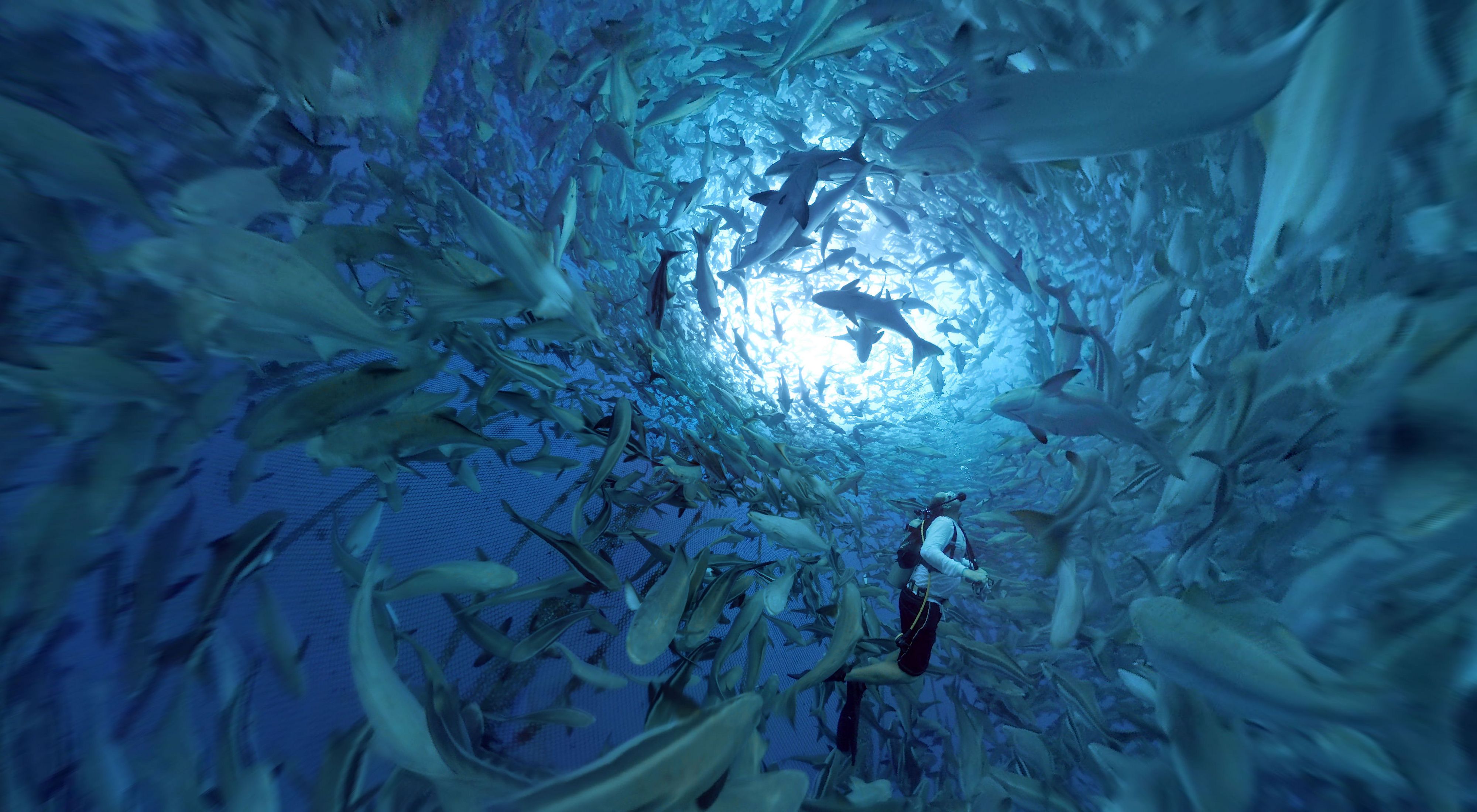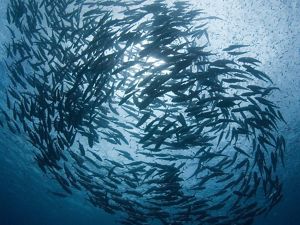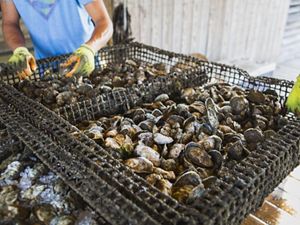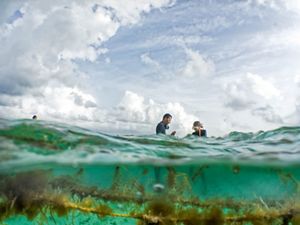Catalyzing the Blue Revolution: How Investors Can Turn the Tide on Aquaculture
By Robert Jones, Global Aquaculture Strategy Lead, TNC and Jason Scott, Co-Managing Partner at Encourage Capital
Key Takeaways
Aquaculture is the fastest-growing form of food production and the source of half the world’s seafood—and most forecasts project continued growth as the global population swells to 10 billion people by 2050.
Farming seafood is one of the most environmentally efficient ways of producing animal protein, but localized environmental impacts have been a major challenge. New technologies and certain production systems now offer the opportunity to grow seafood with less environmental impact.
A large investment opportunity is emerging in sustainable aquaculture, and TNC has partnered with Encourage Capital to create a guide that reveals how investors can help meet the demand for sustainable seafood while achieving competitive financial returns.
Seafood is one of the most important food sources for the world’s seven billion people—for as many as three billion people, it is a key source of protein. That significant demand is projected to rise as the population adds upward of two billion more people in the next 30 years.
Towards a Blue Revolution
A guide from TNC & Encourage Capital on impact investing in sustainable aquaculture.
Download the GuideNo wonder then that aquaculture is currently the fastest-growing form of food production—and one that has significant economic, social and environmental implications. The $243 billion aquaculture industry employs 20 million people worldwide, many of whom live in emerging economies. Aquaculture already supplies more than half of the world’s seafood, and most forecasts project continued growth.
An industry and environmental inflection point
But some forms of aquaculture production have a spotty environmental track record. While farming seafood remains one of the most efficient ways of producing animal protein, poor practices have been linked to water pollution, habitat destruction and a range of impacts on wild fish populations.
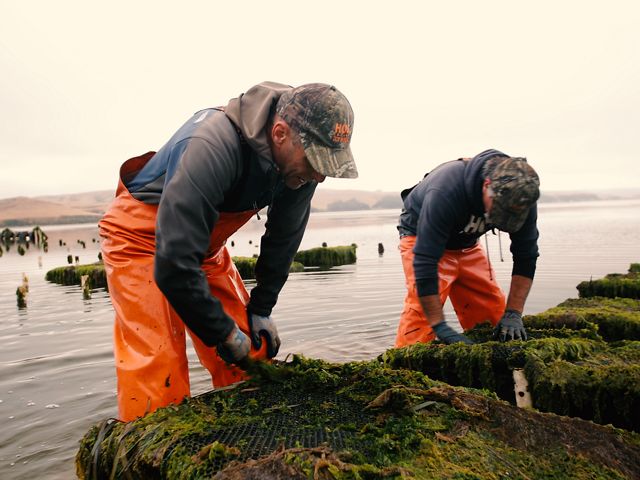
Today the industry is at an inflection point. If business continues as usual, the global reliance on seafood could jeopardize marine ecosystems and the livelihoods they support in myriad ways, especially in coastal communities and the developing world. But if we can shift production toward the most sustainable forms of aquaculture production, we can not only foster healthier marine ecosystems, but also a stronger global food system. The key will be how we direct future investments in the industry.
The investment opportunity for sustainable aquaculture
The growth of aquaculture presents an opportunity that is both environmental and financial in nature. Current forecasts suggest producers will need $150 to $300 billion in capital expenditures in the next ten years to build out the infrastructure required to accommodate consumer demand.
That means impact investors can steer the future of the industry by directing investments toward the most sustainable forms of aquaculture. Driving additional investment toward these low-impact production methods can help ensure that they achieve commercial scale and become more competitive relative to conventional production systems. Such targeted investments should help catalyze a “race-to-the-top” in the sector and could ultimately set the standard high for governance moving forward.
Quote
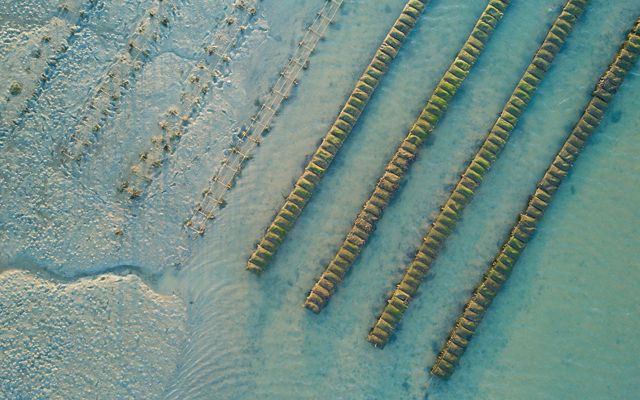
If we can shift production toward the most sustainable forms of aquaculture production, we can not only foster healthier marine ecosystems, but also a stronger global food system.
Capitalizing on this opportunity requires two distinct skill sets: the ability to evaluate the environmental impact of different aquaculture production systems, and to assess key financial considerations and risks associated with each.
What is sustainable aquaculture?
For this reason, The Nature Conservancy (TNC) and Encourage Capital have partnered to create a guide to impact investing in sustainable aquaculture. This represents the first attempt to comprehensively assess this space through a financial and environmental lens. We believe that the industry can help to meet the nutritional needs of a growing global population, while also generating environmental and social benefits, and providing attractive investment opportunities with compelling financial returns.
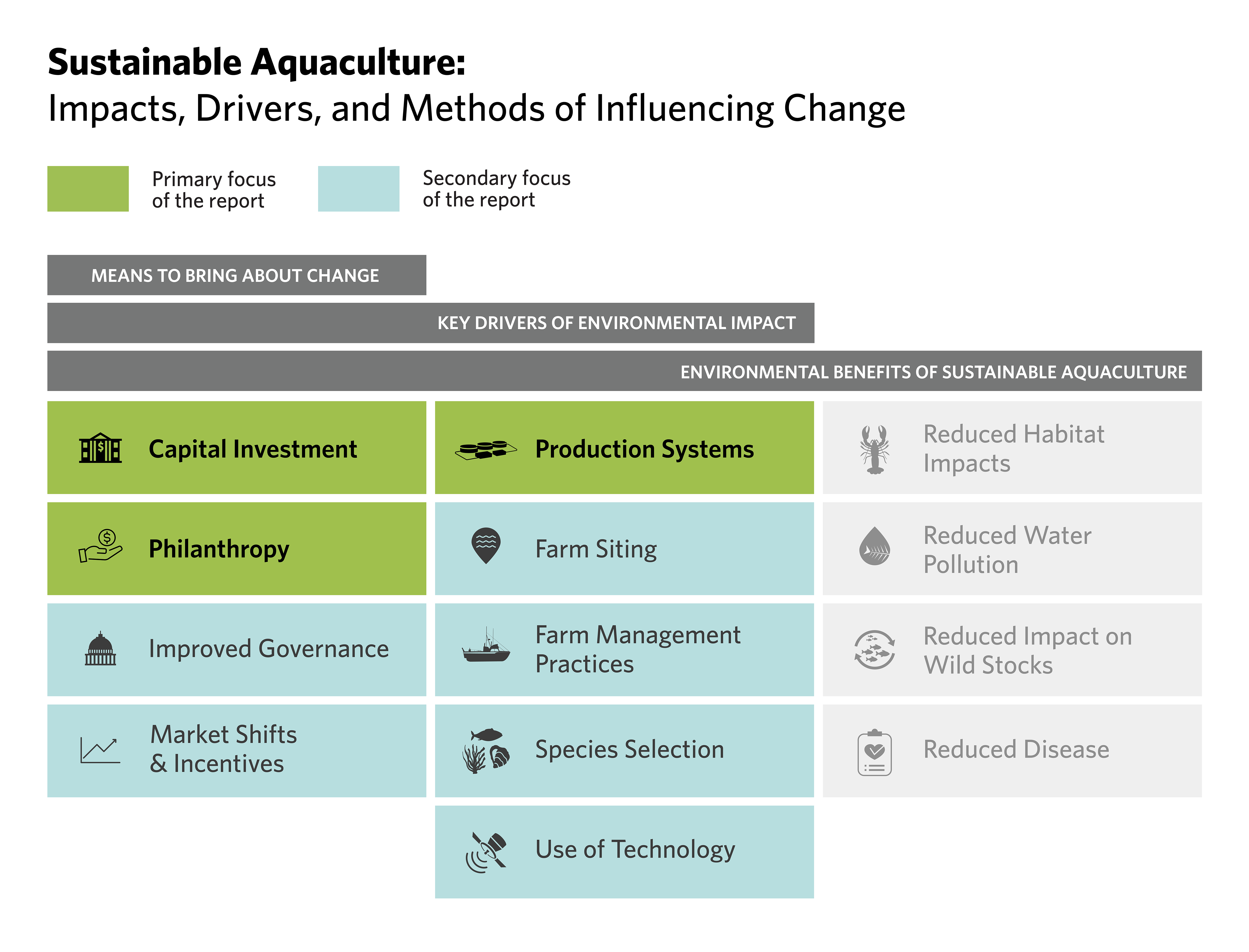
Our guide focuses primarily on the production stage of the supply chain—as opposed to innovative feeds, monitoring systems or consumer-facing products (all of which are important for sustainability and will be the subject of future analysis). Production systems are core to addressing aquaculture’s sustainability challenge, so we determined that this would be an ideal starting point for catalyzing the “blue revolution” we envision.
Three key methods of sustainable aquaculture
Production systems also represent a unique investment opportunity because of the long-term demand for seafood products and the value inherent in owning a real asset. And while investing in production does carry risks, experience with other emerging technologies such as wind, solar and battery storage has taught us lessons about the optimal way to structure capital for these projects. With all this in mind, we have identified three attractive opportunities for impact investment:
- seaweed and bivalve systems
- on-land finfish recirculating aquaculture systems (RAS)
- offshore finfish systems
Seaweed and bivalves—a category of shellfish that includes oysters, clams and scallops—are an easy sell. Not only do they require few inputs, but each has been shown to have restorative effects on degraded habitats by improving water quality, providing habitat for other species and reducing excess nutrients from their immediate environment. The ecological incentives, combined with a growing interest in both species groups for food and non-food uses, create an opportunity to expand production both in scale and geographic scope.
RAS, an on-land farming method, can drive environmentally friendly production by physically separating operations from the marine environment and treating wastewater. While offshore finfish systems like RAS are relatively new, they could avoid many of the impacts that plague near-shore farming by moving activities away from critical habitats and into deep waters with strong currents. And with 90 percent of global wild fish stocks overfished or fully fished, there is hope that these novel forms of fish farming, when practiced well, could create an alternative supply to overfished wild stocks as well as some of the less environmentally responsible conventional aquaculture systems.
3 Key Sustainable Aquaculture Systems
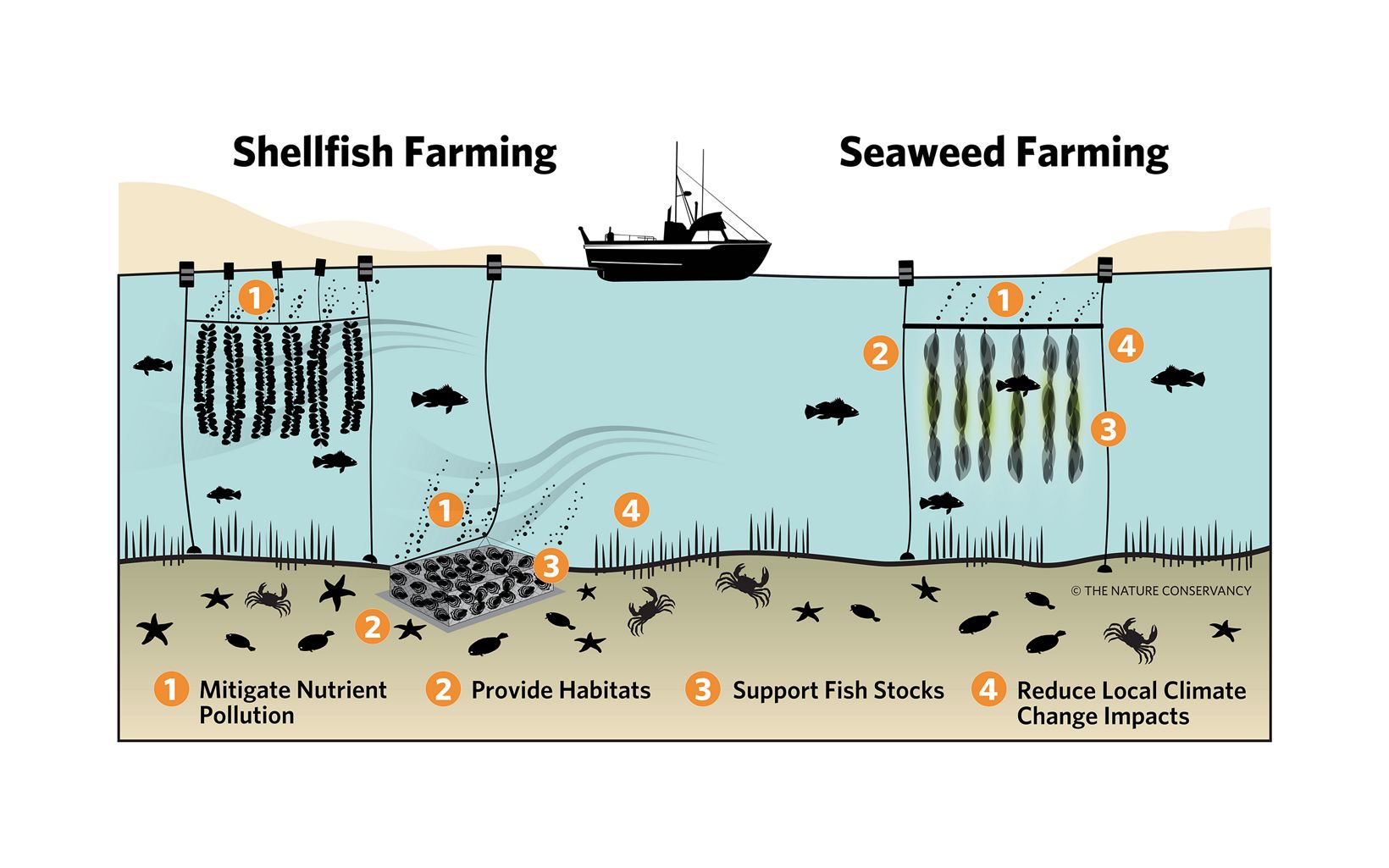
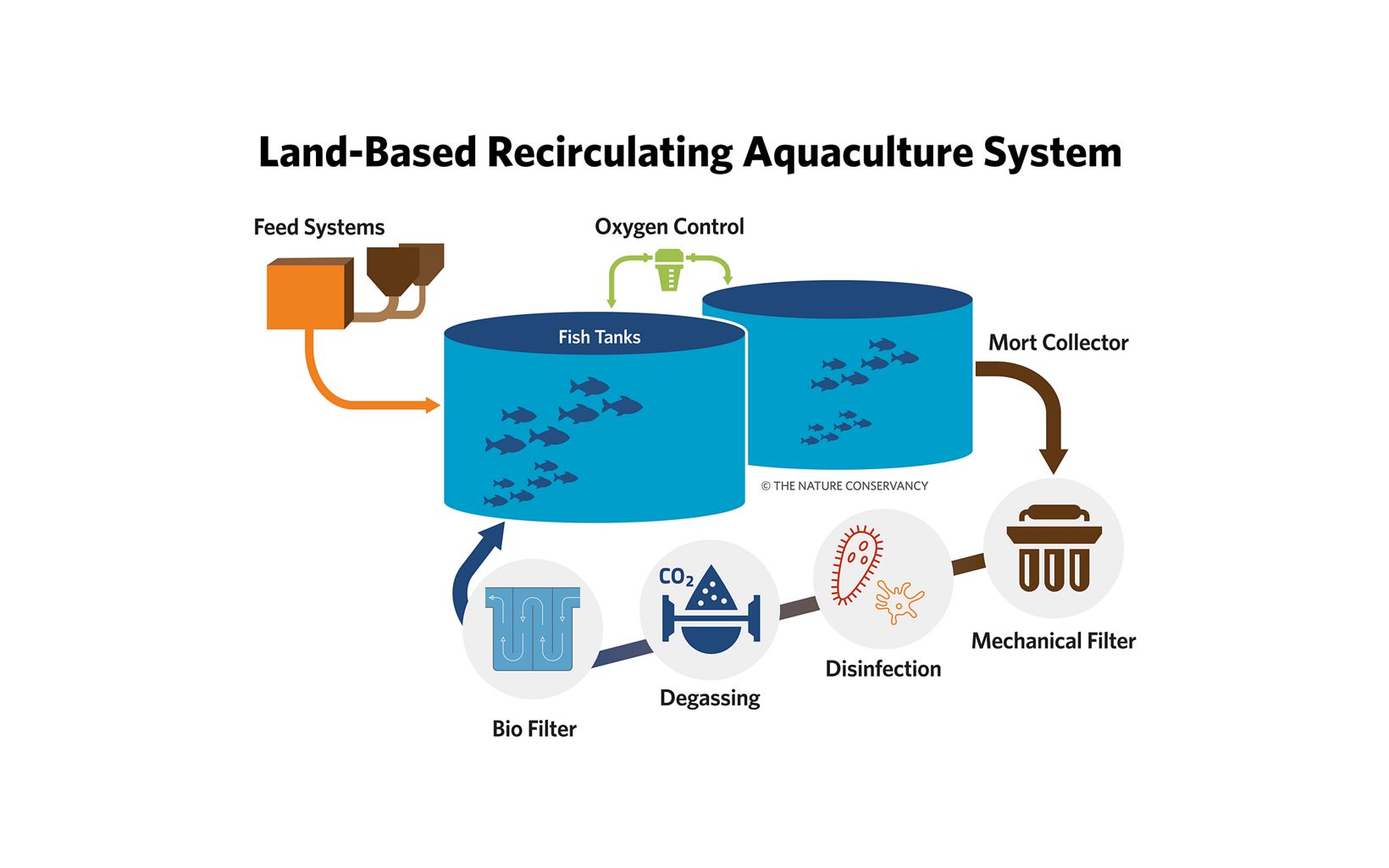
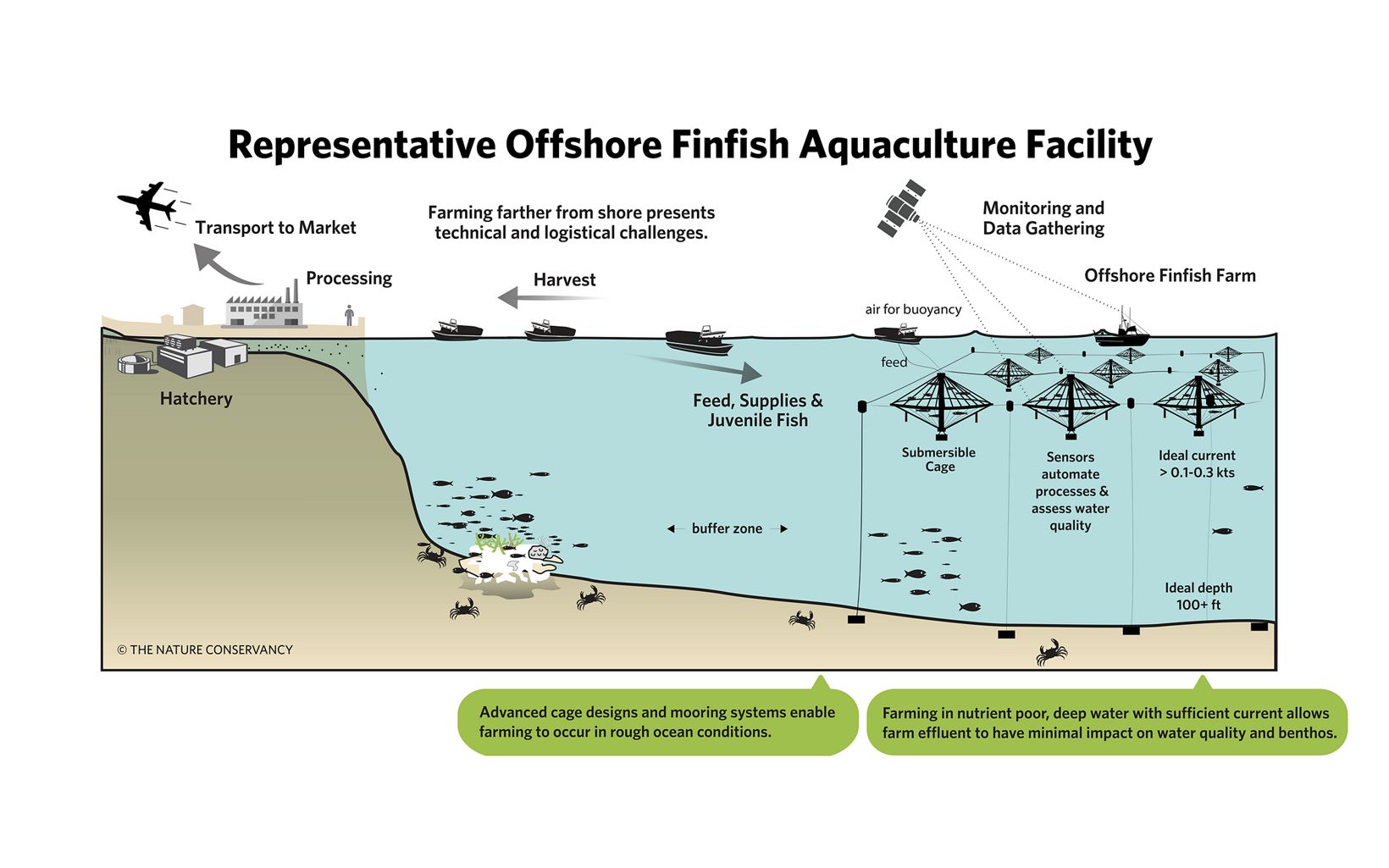



Consumers demand sustainable alternatives
While early RAS and offshore projects have had difficulty competing economically, years of experience are improving these systems and reducing the risks more than investors may realize. Meanwhile, consumers are looking for more sustainable options. In fact, demand for sustainable seafood is growing much faster than the conventional market, making for a bright outlook for the these novel, lower-impact production methods. For investors with a longer-term outlook, these farming methods present a compelling opportunity to invest in the sector while helping to shape a more sustainable emerging food system.
All of this adds up to a rare opportunity for impact investing in the truest sense: a chance to generate compelling financial returns while tackling one of the signature challenges of our era—feeding a growing population without degrading the environment.
-
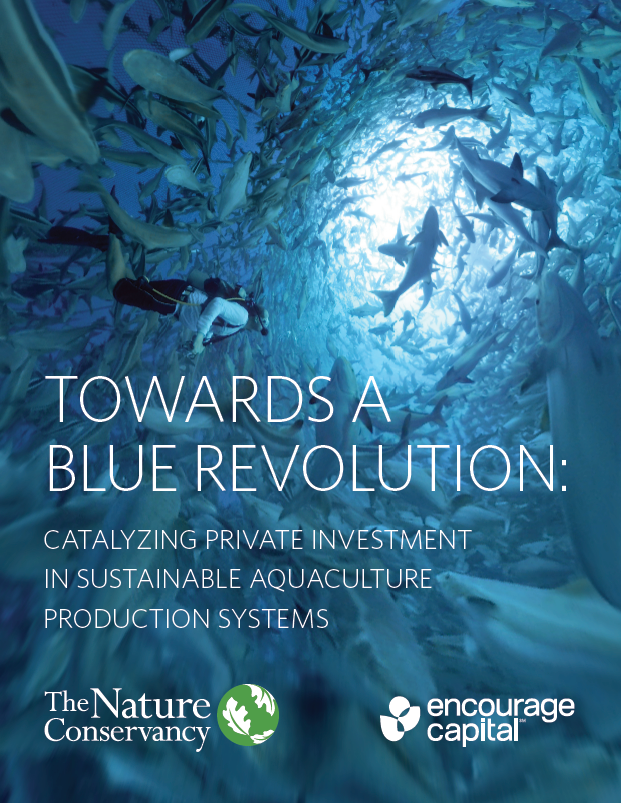
Towards a Blue Revolution
PDF
Download the guide from TNC & Encourage Capital on impact investing in sustainable aquaculture.
DOWNLOAD
Global Insights
Check out our latest thinking and real-world solutions to some of the most complex challenges facing people and the planet today.
